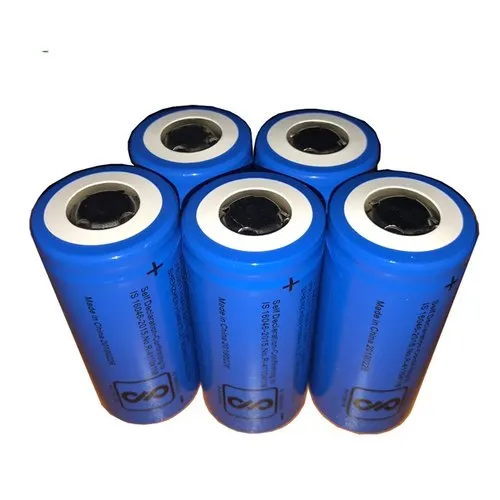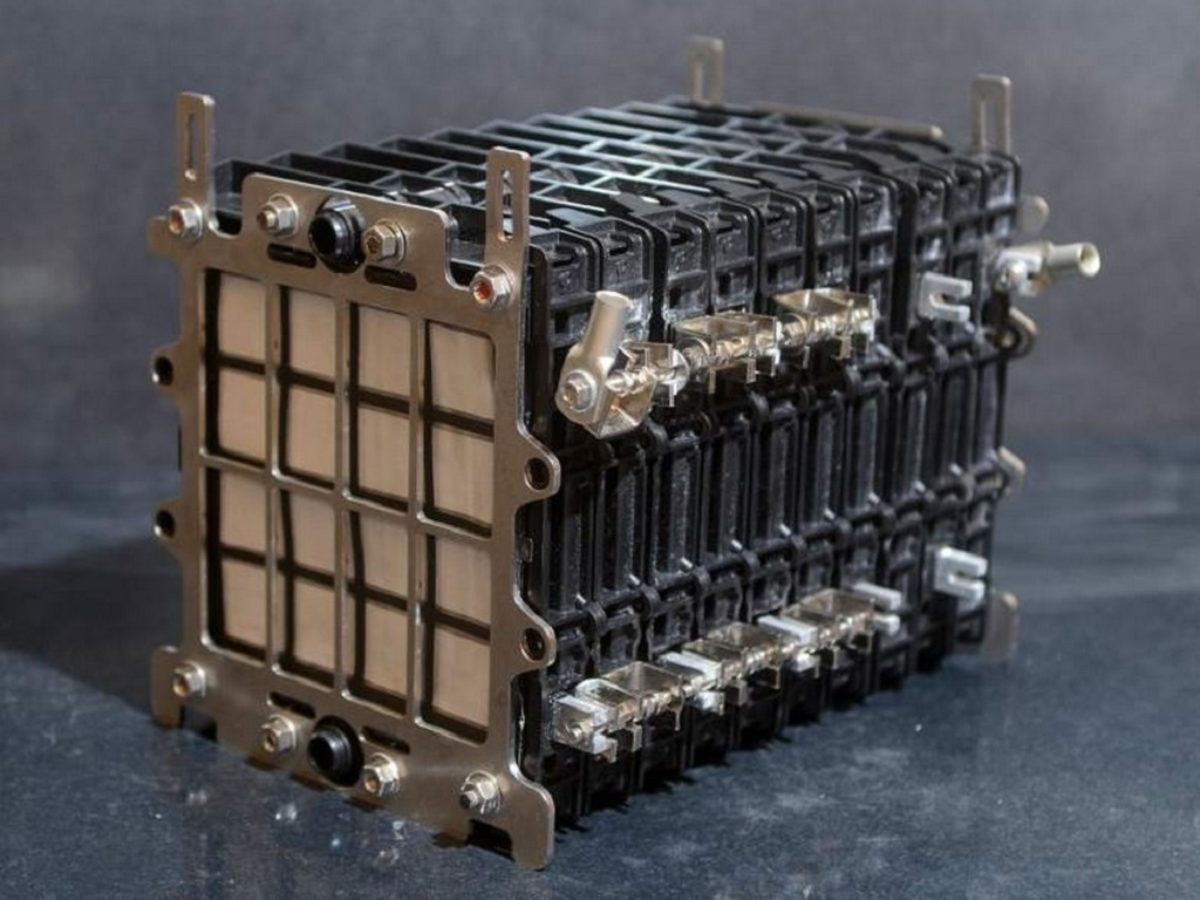An outlook on new additions to the battery world that could be powering the EVs in future.
Lithium-ion batteries were made commercial in the 1990s and since then have been the front-runners in the energy storage segment. High energy densities, great rechargeability and low self-discharging rate made them favourable for prolonged use. They have been the most preferred option till now but because of their high cost and complex extraction process, there has been a rise in the need for alternatives for the same. Let us take a look at some of the evolving battery technologies.
Lithium Ferro Phosphate
The LFP battery operates similarly to other Li-ion batteries, moving between positive and negative electrodes to charge and discharge. However, phosphate is a non-toxic material compared to cobalt oxide or manganese oxide which are used in lithium-ion batteries. LFP batteries are capable of delivering constant voltage at a higher charge cycle in the range of 2,000–3,000. Unlike many cathode materials, LFP is a polyanion compound composed of more than one negatively charged element. Its atoms are arranged in a crystalline structure forming a 3D network of lithium ions.
LFP is known for its low cost with some estimates putting it as much as 70 per cent lower. The cost advantage comes from its chemical composition. Iron and phosphorus are mined at enormous scales across the globe and are widely used in many industries. LFP batteries also have a smaller environmental impact; they don’t contain nickel or cobalt, which are supply-constrained, expensive, and have a larger environmental impact.

LFP batteries have a longer lifecycle than other lithium-ion batteries because cells experience slower rates of capacity loss. Their lower operating voltage also means that cells are less prone to reactions that impact capacity. With a consistent discharge voltage and lower internal resistance, LFP-powered vehicles can deliver power faster and achieve a higher charge/discharge efficiency. However, LFP batteries have a low energy density, which means they require more protection. They also tend to not perform adequately at low temperatures. They are more prone to transportation and ageing effects.
Despite being dated technology, LFP and its associated reduction in battery costs may be fundamental in accelerating mass EV adoption. Major automakers including Ford, VW and Tesla are increasingly leveraging lithium-iron-phosphate for electric vehicle batteries.
Aluminium-air
It is neither a battery nor an engine, but rather an electric equivalent of an engine. In this engine, the fuel is aluminium metal (the anode), which reacts with the oxygen (the cathode) around it to create power. Since the cathode is just oxygen from the surrounding air, there is no need to carry the weight of another metal like a conventional battery, and this makes it considerably lighter. In the Aluminium-Air battery, aluminium hydroxide is produced when energy is released after aluminium reacts with oxygen in ambient air. Due to its lightweight and high energy density, an Aluminium-Air battery increases the driving range of electric vehicles. It is estimated that 25 kg of aluminium will provide a driving range of about 1600 km and the entire battery will weigh about 90 kg
Refuelling is also quick with this technology, and the need for expensive nationwide charging networks is also eliminated. These batteries are expected to make EV adoption more convenient and accelerate the transition to zero-emission mobility.

However, a major disadvantage of the aluminium-air battery is that it is not rechargeable. Once the aluminium is consumed, the battery must be replaced, which means that some sort of battery-swapping station or service would need to be readily available to drivers. However, the by-product of the battery’s reaction, aluminium hydroxide, is recyclable. Automobile manufacturers are currently testing this technology. Recently Aditya Birla Group‘s metal flagship, Hindalco, has signed an MoU with Phinergy, a leading Israel-based pioneer in metal-air battery technology, and IOC Phinergy Private Limited (IOP) – a joint venture between Phinergy and Indian Oil Corporation, to create aluminium-air batteries for electric vehicles.
Lithium-Sulphur Batteries
Li-sulphur batteries can overcome Li-Ion battery limitations in terms of cost, and the abundance of sulphur available with a reduced environmental footprint. These batteries have a much higher energy density in comparison to Li-ion batteries. Another great advantage of Li-S batteries is the affordability owing to sulphur being a more abundant material than cobalt. The Li-S battery system has a redox reaction-based storage mechanism, which delivers higher energy density. Sulphur is sourced from industrial waste and cardanol is sourced from bio-renewable feedstock that is easily available, non-toxic, and environmentally friendly.
A few months back, researchers at Monash University in Australia developed a very high-performance and energy-efficient lithium-sulphur (Li-S) battery with a potential electric vehicle (EV) range of 1000 KM

The Li-Sulphur battery technology leverages principles of Green Chemistry. From gadgets to drones, electric vehicles (EV), and other products, the Li-S battery has the potential to aid multi-billion-dollar industries. They come with problems of short lifespan and energy loss along with transportation problems because of the chemicals used in them. Johnson Matthey, LG Chem, Morrow Batteries, NOHMs Technologies, OXIS Energy, PolyPlus, Sion Power, and Williams Advanced are some of the lithium-sulphur battery manufacturers.
Sodium-ion
Sodium-ion batteries have great potential. They’re energy dense, non-flammable, and operate well in colder temperatures, and sodium is cheap and abundant. Plus, sodium-based batteries will be more environmentally friendly and even less expensive than lithium-ion batteries are becoming now. Sodium-ion battery performance has been limited because of poor durability and low energy density, but developments are underway to overcome these issues. Some manufacturers have spoken of how Li-ion batteries make up for the most expensive component of an EV, accounting for 40-50% of its cost. If sodium-ion cells are manufactured on a mass scale, many in the sector believe it will make EVs more affordable
Sodium is a common element available in plenty of amounts across the world. Sodium is usually mined from soda ash and can be found anywhere. Can be found even in seawater. It is the 7th most abundant material in the world. It is much cheaper than lithium as it costs less to extract and purify.

Sodium-ion battery cells can be manufactured with ample metals such as iron and manganese, li-ion on the other hand requires cobalt, which is limited in reserve and distributed across the world in an uneven manner. Also, cobalt is highly expensive to obtain. Na-ion batteries can be built using existing battery equipment and don’t require massive redesigning effort. They are able to operate at a wider temperature range.
Non-flammable and no thermal runaway, thereby reducing risks of battery fires. They are lightweight so will ensure more efficient and agile handling of EVs. Safety risk during transit is also nil. Manufacturers can transport the sodium ion batteries with battery terminals connected and voltage held at zero. Top manufacturers of sodium-ion batteries are Faradion Limited, AGM Batteries Ltd., Altris, and NGK Insulators among others.
Zinc-ion
Advancements in Zinc based batteries are now presenting potential alternatives to Li-ion batteries. Zinc-based batteries are not new technology. The first patent was issued in 1901 to Thomas Edison and these were commercialised in the 1930s. Li-ion batteries use a process called intercalation that allows for lighter, more compact batteries that still have high energy density-properties that make them ideal for EVs.
However, recent developments in zinc-based batteries show considerable promise in matching the feasibility of Li-ion batteries, while improving on other parameters like safety and recyclability. Lithium being highly reactive to water, manufacturing them requires complicated and expensive processes to control factory environments. Zinc-ion batteries are water-based and avoid this issue altogether.
Unlike Li-ion batteries, zinc-ion batteries do not require formation cycling after manufacturing to increase longevity, allowing them to travel off the production line quicker. The primary ingredients of zinc are zinc and manganese. Both are available widely in India and India ranks in the top 5 for production of both, making zinc a viable option for domestic battery production. The manufacturing of zinc-ion batteries is also comparatively straightforward due to the similarities with li-ion batteries as the manufacturing expertise and equipment accrued over time for li-ion batteries can be leveraged for zinc-ion batteries.
Other zinc-based batteries are showing promise as li-ion alternatives for EV applications. For example- aqueous 3D sponge zinc-based batteries avoid rechargeability issues commonly faced by older zinc battery technology.
Battery technology advancements require thorough governmental support to ensure that no economic and technological obstacles pose a threat to development. New batteries require a considerable amount of research and tests to be approved. They need proper and widely available charging infrastructure as well. Finding better battery alternatives should be a never-ending process in the quest to make our electric vehicles more driver and environment-friendly.








